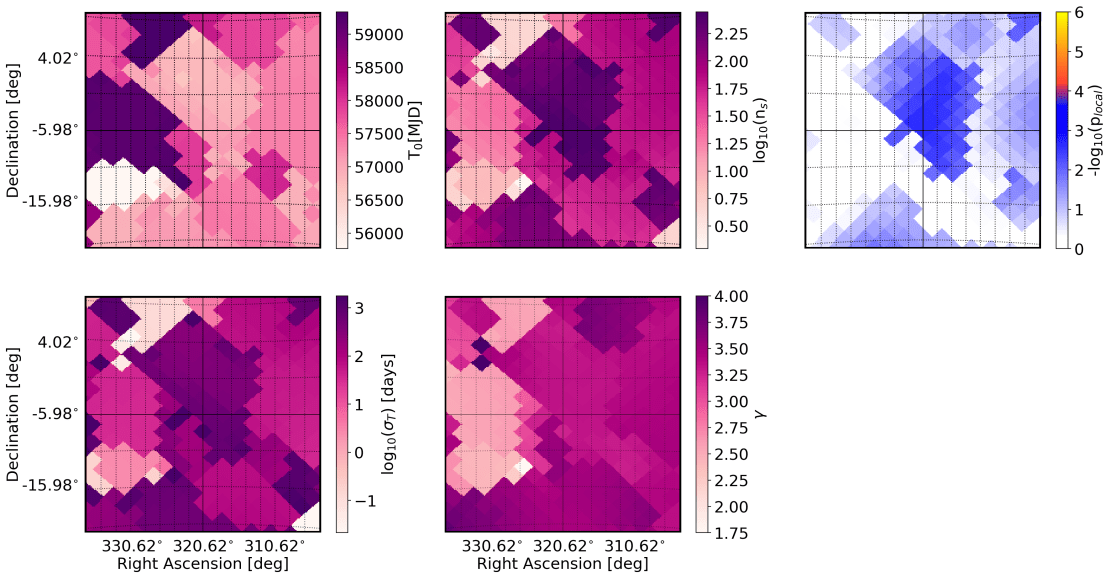Still to this day, the origins of cosmic rays—the astrophysical objects that produce and accelerate cosmic rays—remain to be identified. However, high-energy neutrinos, tiny, nearly massless particles, may be the key to solving this long-standing mystery.
At the South Pole, the IceCube Neutrino Observatory occupies a cubic kilometer of ice in search of high-energy neutrinos from the far reaches of outer space. Although IceCube reported astrophysical neutrinos from cosmic accelerators in 2013, many of them still have unresolved origins. The first evidence of an astrophysical source came from the coincident detection of a high-energy neutrino, selected by the real-time alert program, with the blazar TXS 0506+056. Most recently, IceCube observed evidence for continuous neutrino emission from the active galaxy NGC 1068 and our Milky Way galaxy. The coordinated observations from other experiments, called multimessenger astronomy, have revealed specific classes of transient astrophysical objects as contributors to the intense neutrino streams, or the neutrino flux, but there may be other astrophysical sources that remain undiscovered.
In a new study submitted to The Astrophysical Journal, the IceCube Collaboration presents a time-dependent search for neutrino flares across the entire sky using a new dataset containing only cascade-like events. The new analysis complements prior analyses that only contained track-like events. No significant evidence was found for neutrino emission across the entire sky but upper limits were placed on the time-dependent neutrino flux.

The search used a 10-year dataset containing only cascade-like events, or neutrino interactions in the ice that result in roughly spherical showers of light. Included in the dataset was information about the direction the cascade event came from, the time of detection, and the total energy for each cascade event. The analysis also excluded any external multimessenger information to remain unbiased towards which astrophysical objects might be emitting neutrinos and when. Certain parameters, such as when the neutrino flare occurred and how long it lasted, were used to characterize the neutrino flares clustered together in time and space.
“Although we did not find evidence for neutrino emission, the results are exciting because we were able to constrain how neutrino flares contribute to IceCube’s measured diffuse neutrino flux without assuming which sources are potentially producing neutrino flares,” says Michael Kovacevich, a physics PhD student at Drexel University and lead on the study. “In addition to IceCube’s previous searches for neutrino flares, this analysis deepens the mystery of where the neutrino flares are.”
The constraints in this study further our knowledge of how undetermined, transient sources may contribute to the astrophysical neutrino flux. With the completion of IceCube-Gen2, the next generation of IceCube, more sensitive searches for transient neutrino emission across the northern and southern skies can be performed.
“This result shows that cascades can be used for searches for neutrino flares, with future analyses benefiting from using both track and cascade events,” says Kovacevich.
+ info “All-sky Search for Transient Astrophysical Neutrino Emission with 10 Years of IceCube Cascade Events,” IceCube Collaboration: R. Abbasi et al., The Astrophysical Journal 967 (2024) 1, 48, iopscience.iop.org, arXiv